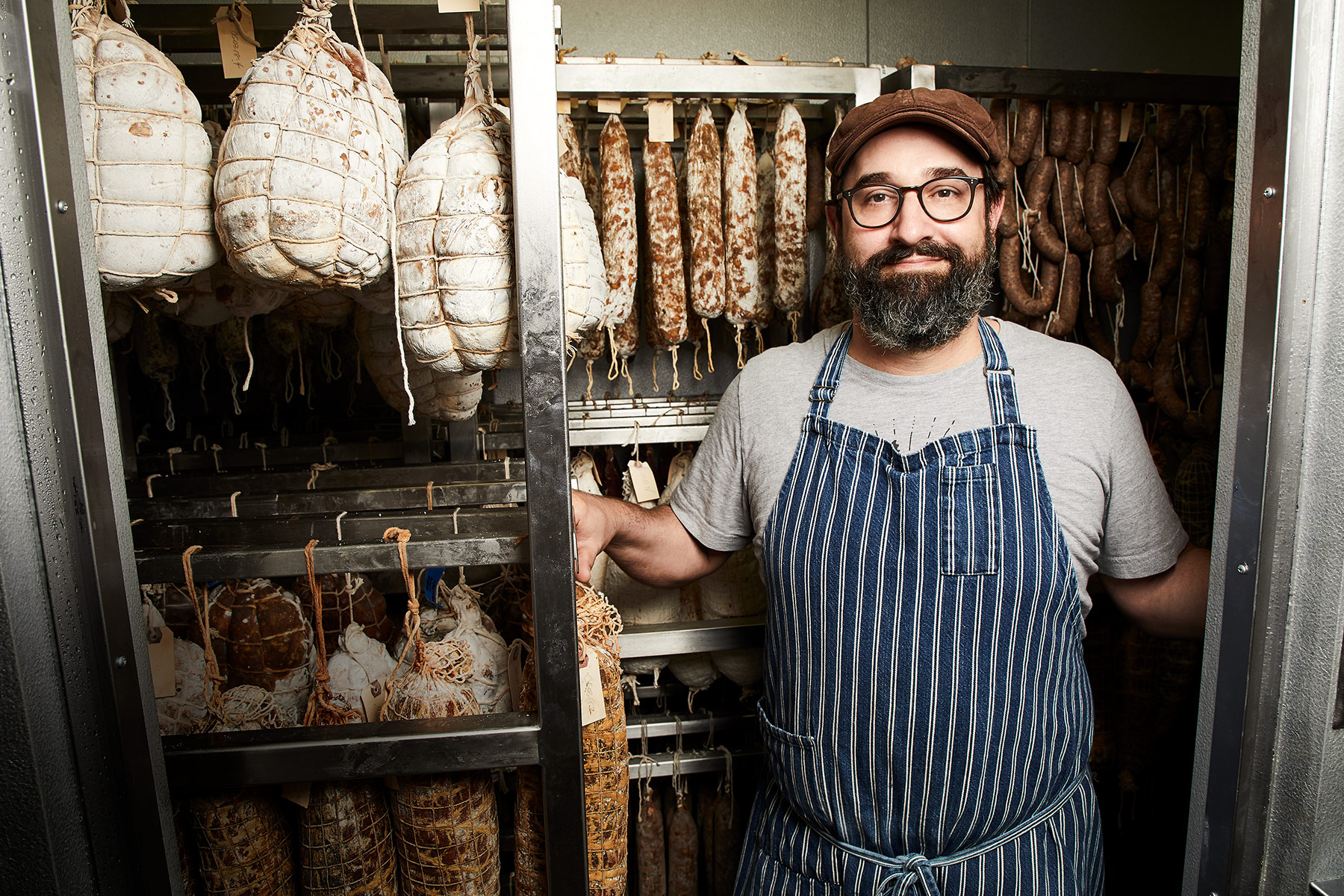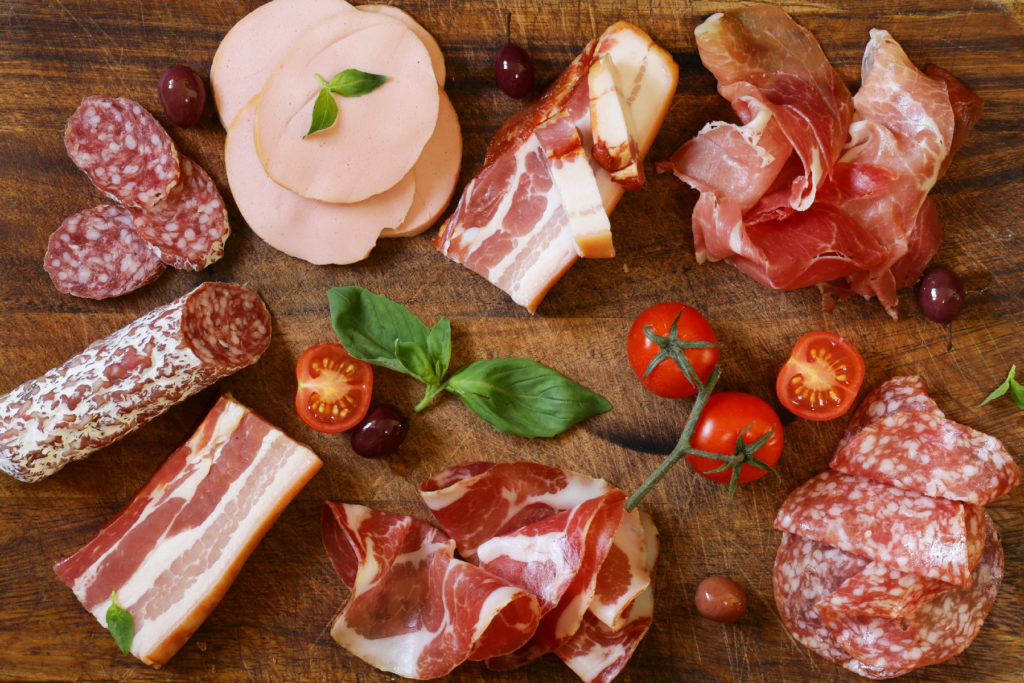David Uygur’s walk-in curing locker at Macellaio (the restaurant’s name means “butcher” in Italian) is full of hanging salumi, rosy or ocher under a delicate and velvety snow-white bloom. The encased meats are losing their moisture, gradually becoming soppressata or spicy chorizo. He opened Macellaio with his wife, Jennifer, in June. His hope was to expand on the repertoire of charcuterie that he started at the now-closed Lola, where he used a walk-in cooler for his experiments, and refined at the couple’s intimate Lucia. It’s a calculus, leveraging space relative to time. He says he learned “a couple of pâtés” in culinary school, but had to teach himself the process of dry-curing from books, opening the door to fermented, dried sausages and whole-muscle cuts, with their tangy, developed flavors. His curing locker is filled with the riches from heritage Red Wattle hogs that come in monthly. First comes careful butchery, then meticulous netting and tying to ensure that a cut keeps the right shape over time. Moisture and pH levels must be checked for weeks and months before the charcutier decides when to release them from their hooks—not too soft, not too firm—and bring them to the board. Uygur’s preference is to keep them cold until served, so when you pick up a slice the warmth of your fingers releases its flavors. During his self-guided tour of dried meats, Uygur has made a beautiful stained-glass window of ventricina al sangue, a brooding deep maroon color, with bits of hand-cut fat and fierce chile di Abruzzo heat mellowed by blood; mortadella, lightly smoked and studded invitingly with pistachios; coppa cured with chamomile; and mica, not cased, but left to dry flat, looking like a shaggy wheel of cheese. He keeps the flavors interesting: a salami with powdered candy cap mushrooms, sweet and maple-y; a whole-muscle cut cured with gin botanicals—juniper, coriander, rose petals, black pepper—and washed with gin. He understands that ventricina varies depending on location—a soft sausage here, a firm, spicy one there. Uygur visits meat lockers and invites fellow charcutiers to teach classes on working with koji. He once found himself breathing in the spores and musty funk of four stories of curing hams at a prosciutto producer in Abruzzo. For him, it’s always been about seeing exactly how the sausage is made.



